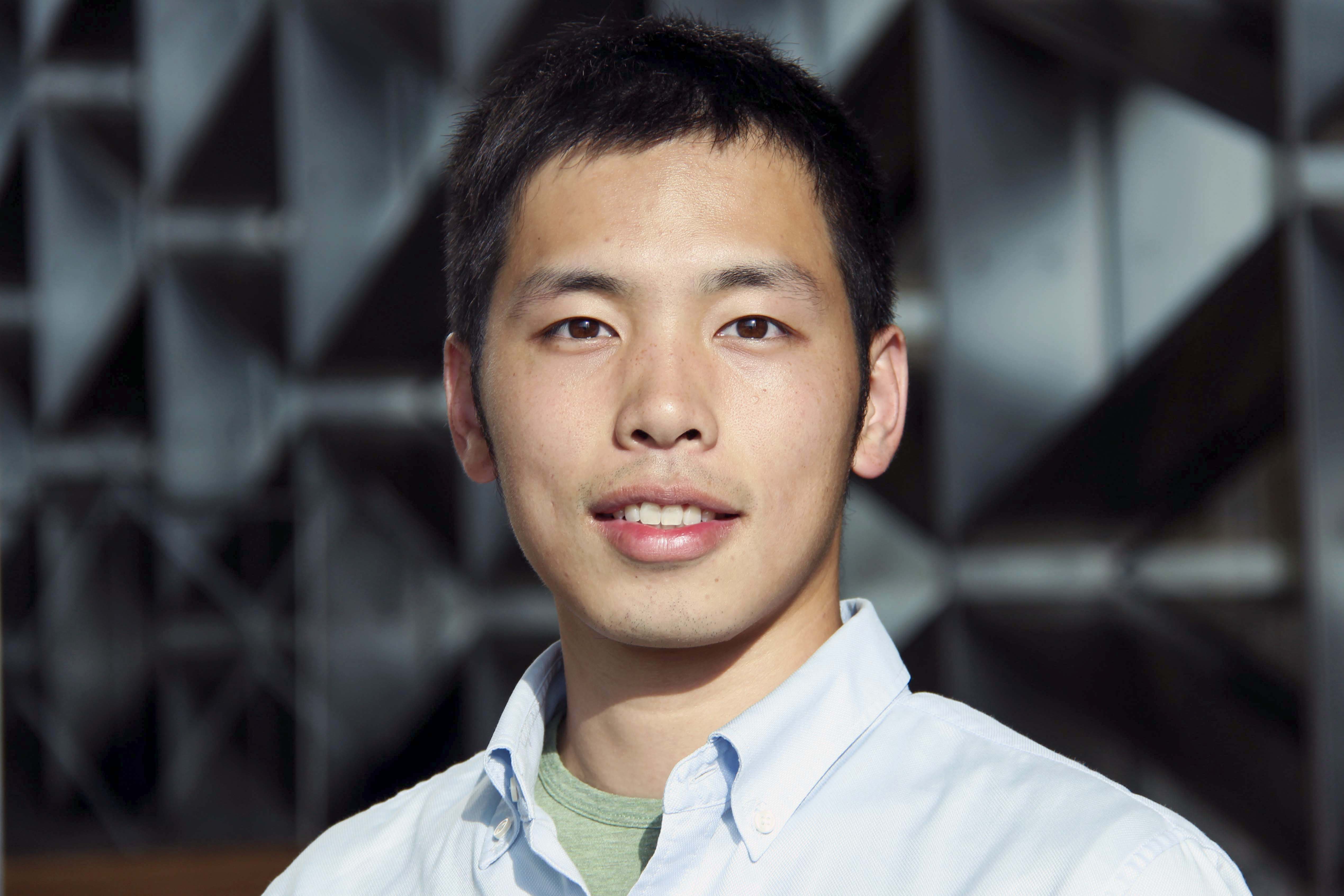Yuan-Kai Liu wins EGU poster award

Yuan-Kai Liu, a master’s student from the KAUST Earth Science and Engineering program, won the Outstanding Student Poster and PICO Award at the European Geosciences Union General Assembly 2017. Photo by Meres J. Weche.
By David Murphy, KAUST News
Yuan-Kai Liu, a master's student from the KAUST Earth Science and Engineering program, won the Outstanding Student Poster and PICO (OSPP) Award at the European Geosciences Union (EGU) General Assembly 2017 in Vienna. The EGU General Assembly, which was held in April, is an annual event that supports the EGU's dedication to the pursuit of excellence in the earth, planetary and space sciences for the benefit of humanity.
The OSSP Award was given to Liu for his poster entitled "Contemporaneous Ring Fault Activity and Surface Deformation at Subsiding Calderas Studied using Analogue Experiments." Liu's EGU 2017 poster presented results from analogue experiments, including deformation characteristics from time-resolved digital image correlation and 3-D spatial photogrammetry data. The poster highlighted how caldera ring-faults development is responsible for complex ground deformation patterns, providing a better way of magma reservoir inversion.
Liu, who was a first-year master's student at the time of the award, was especially pleased with his win, as out of the 57 students who received the OSPP Award, only five were master's students. The rest of the student awardees were presenting their Ph.D. research, with some in the final year of their research.
"I am very pleased that my poster has been selected for an OSPP Award at EGU General Assembly 2017. It's an encouragement to get this recognition for what I am doing. I want to thank everyone in our research group for their help, especially the collaboration with Joel Ruch, Hannes Vasyura-Bathke and Professor Sigurjón Jónsson" Liu said.
Current research
Liu is a member of the Crustal Deformation InSAR (CDI) Group under the supervision of Professor Sigurjón Jónsson. The research group focuses on the use of satellite radar interferometric (InSAR) imaging of the Earth's surface to measure ground deformation due to a variety of geophysical processes. The group is interested in everything that moves the ground, e.g. earthquakes, magma accumulation under volcanoes and pressure changes in reservoirs.
Liu's current research is focused on ground deformation analyses of several subsiding calderas. A caldera is a large cauldron-like depression topography at the center of a volcano (e.g. Wolf Volcano in the Galápagos archipelago). His work combines analogue experiments with numerical modeling, and the goal of his current research is to explain the underground processes behind the complex and overlapping ground deformation signals observed from satellite radar images.
"[To further understand the mechanism,] my work comprises analogue experiments and numerical modeling on subsiding calderas. The work will provide a better understanding on modeling volcanic magma chamber location, volume change and related host-rock fracturing, which are important for both volcanic sciences and hazard assessment," Liu noted.
This year's EGU General Assembly was deemed a great success, with 4,849 oral, 11,312 poster and 1,238 PICO presentations. The conference featured 14,496 scientists from 107 participating countries, of which 53 percent were under the age of 35.
Related stories:
- Ph.D. student Mohammad Shaqura chosen as finalist for IEEE Best Student Paper Award
- KAUST Ph.D. students Amal Hajjaj and Sherif Tella win best paper awards
- KAUST Ph.D. student Chuan Xia wins best poster award at ICMAT 2017
- Zahra Al-Saffar wins first prize for best student poster at EMBS 2017
- Ph.D. student Sofya Mudrova wins best biology poster award

